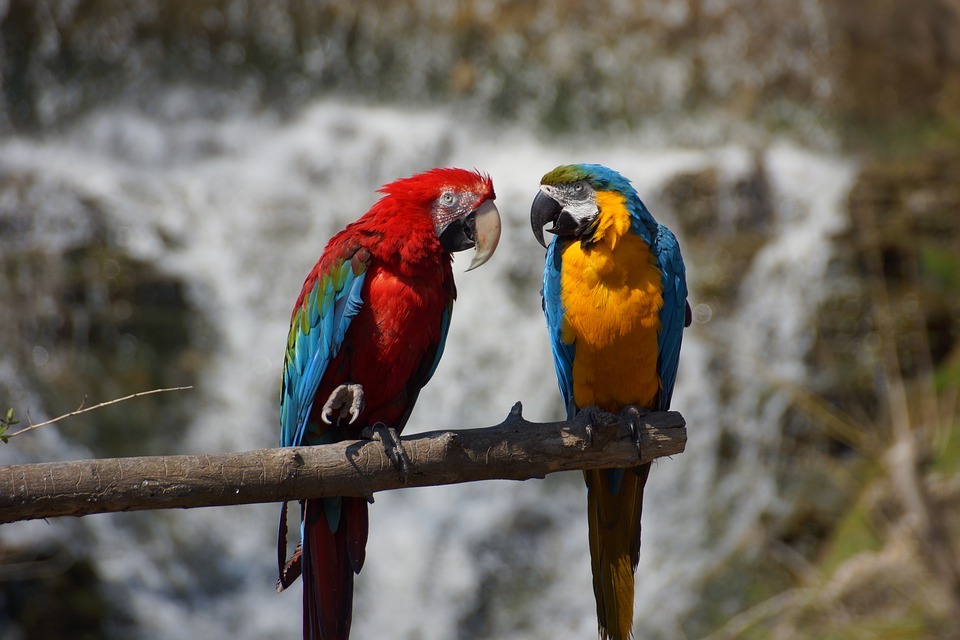Parrots are fantastic creatures – aside from their vividly colored plumage, these birds are also known for their intelligence, trainability, acrobatics, and silly personality. Little wonder that parrots are one of the most popular pets in the US.
If keeping parrots as pets would be the same as keeping other pet birds, you will be in for a challenge. Parrots are intelligent and social creatures that demand constant attention and high amounts of stimulation. Else, they can develop bad habits and may end up bored or stressed to the point where they start to pluck their own feathers!
The exotic parrot trade is a lucrative business worldwide, contributing to their falling numbers in the wild. But thankfully, the passage of the 1992 Wild Bird Conservation Act and other official restrictions have helped stem the importation of exotic birds.
Here are some of the other fascinating and colorful facts about parrots:
1) The kakapo – the flightless parrot
Sirocco, the famous kakapo
The kakapo parrot deserves mention here because it is currently one of the world’s rarest and strangest birds. It is the only parrot that cannot fly. It is also the heaviest and fattest parrot – a full-grown male can weigh as much as nine pounds, the average weight of an adult domesticated cat. It can also grow up to two feet long.
Kakapo parrots are native to New Zealand. While all other parrots are diurnal and omnivore, the kakapo parrot is the only nocturnal and herbivore parrot. It shares similar characteristics more with owls than with other parrots. Kakapos and owls look similar to each other, and both are active at night.
There are stranger and more interesting facts about the kakapo parrots. They are known for their sweet odor, which will remind you of honey. However, that sweet smell can make them vulnerable to hungry predators. They also have a well-developed sense of smell, which serves them well as they forage during the night.
Kakapo is listed as “critically endangered” species by the IUCN, with only 142 of them remaining.
2) Not all parrots are tropical
Kea, the only alpine parrot
Currently, there are roughly 440 species of parrots, and a majority of them live in the tropical regions of Asia, Australia, South and Central America, and Africa. But not all parrots like to live in tropical locales. The endangered kea, endemic to the Southern Alps in New Zealand’s South Island, is the only alpine parrot. The austral parakeet dwells in the temperate ranges at the southern tip of South America. The maroon-fronted parrot, another endangered species, is endemic to the Sierra Madre Oriental mountains in Mexico.
3) A third of the world’s parrot population is endangered
4) Many parrots have long lives
5) Parrot feathers have antimicrobial properties
6) A few species of parrots migrate
7) The enigmatic Solomon Island eclectus parrots
The Solomon Island eclectus parrot has an extreme case of sexual dimorphism, which means that males and females look distinctly different from each other, aside from the differences between their sexual organs themselves. The males usually have a bright emerald green plumage and flame-colored beaks, while the females have a crimson and royal blue plumage, scarlet heads, and black beaks.
